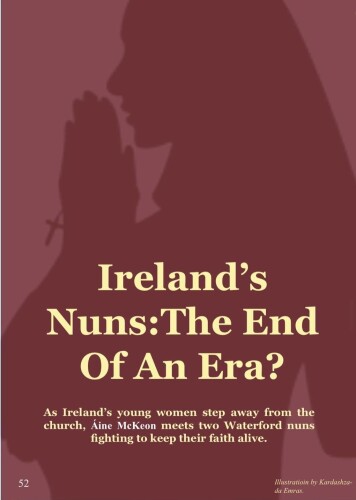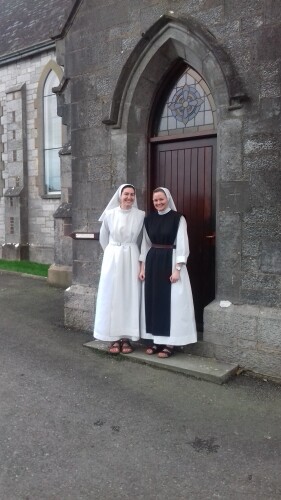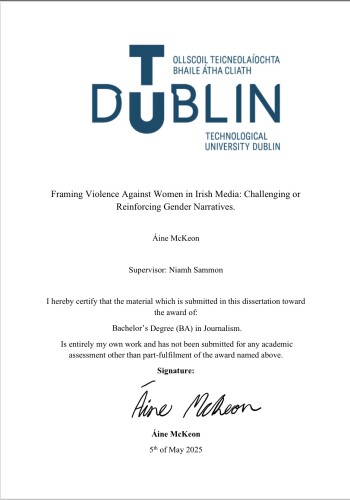Ireland’s Nuns: The End of an Era?
In Ireland, the number of women entering religious life has declined dramatically over the past two decades. In 2000, there were more than 9,000 nuns across the country. By 2023, that number had fallen to just under 4,500. Today, the average age of a nun in Ireland is around 80. In a culture that celebrates independence, career ambition, and personal freedom, the idea of joining a convent can seem outdated, even radical. For most young Irish women, dedicating a life to religious vows of chastity, and obedience feels far removed from their world. And yet, a small number still choose this path, driven by a sense of spiritual calling that defies modern expectations.
Sister Beatrice Brady, 29, is one of them. She’s originally from Belturbet in Co. Cavan and joined Saint Mary’s Abbey in Glencairn six years ago. Speaking from her monastery in Waterford, she addresses a common assumption people make that entering religious life means giving up everything. “The main misconception is that you’re just giving up your life,” she says. “Actually, you’re giving it up to gain an awful lot.”
Unlike the stereotypical story of someone raised in a devoutly religious household, Beatrice’s journey to the convent was gradual and deeply personal. She studied Law and German at Trinity College Dublin and discovered her faith independently. A turning point came when she watched an RTÉ documentary about the Medical Missionaries of Mary,four Irish nuns doing missionary work in the remote Turkana desert in Kenya. Their sense of purpose struck a chord. “They were living for something greater than themselves,” she recalls, “a love that transcended everyday life.”
Sister Laura Cullen, 32, also took an unexpected path to the convent. Originally from the small village of Kildaloon in Co. Meath, she entered religious life three years ago. Before becoming a nun, she worked as a social worker and studied English literature and philosophy at University College Dublin. “I had such a hunger for depth in my life,” she explains. Her transition wasn’t without struggle, leaving behind a career she valued and facing skepticism from family members who didn’t understand her decision. “Can I sacrifice my career and all the potential of the future?” she once asked herself. In time, however, she found peace in what she had chosen instead.
Both women acknowledge the heavy shadow cast by the Catholic Church’s recent history in Ireland, particularly the abuse scandals and the Magdalene laundries. Laura remembers the heartbreak of reading about it all while discerning her vocation. “It was challenging. But I had to feel that pain and trust God in it,” she said.
Still, they believe the decline in numbers isn’t entirely negative. For them, fewer vacations mean more thoughtful, sincere choices. “It’s a good thing,” Laura says. “There’s more support, structure, and discernment now.”
Ireland may be moving away from its religious past, but for women like Sister Beatrice and Sister Laura, faith continues to offer a meaningful and quiet way of life.


